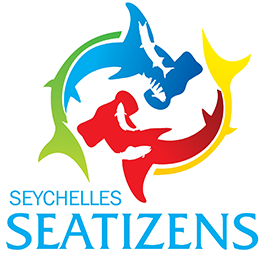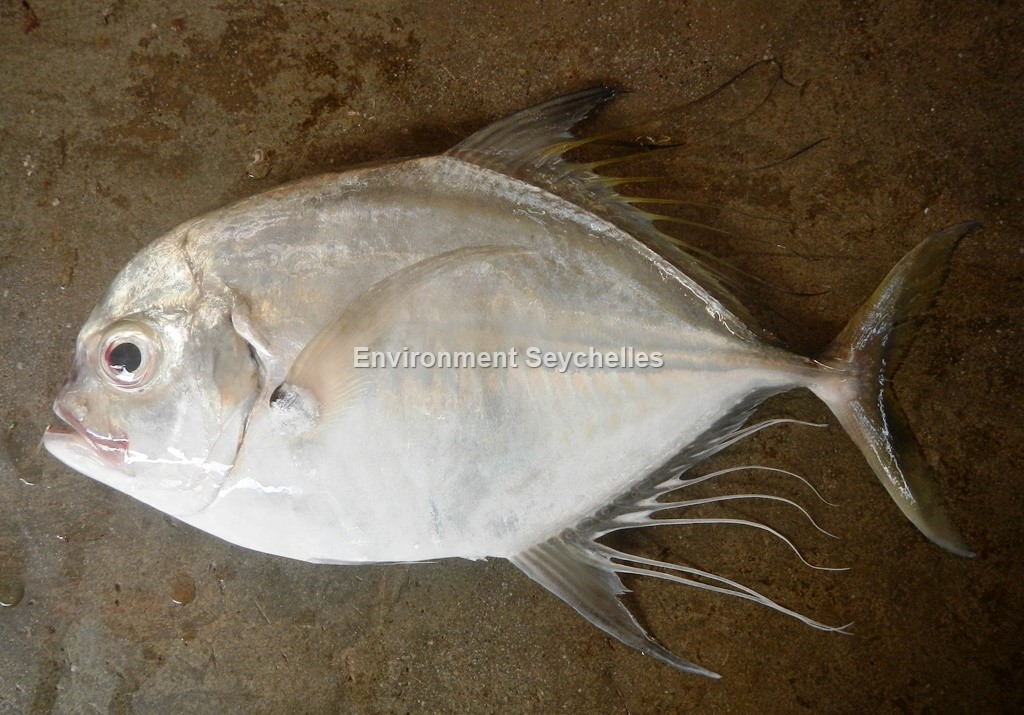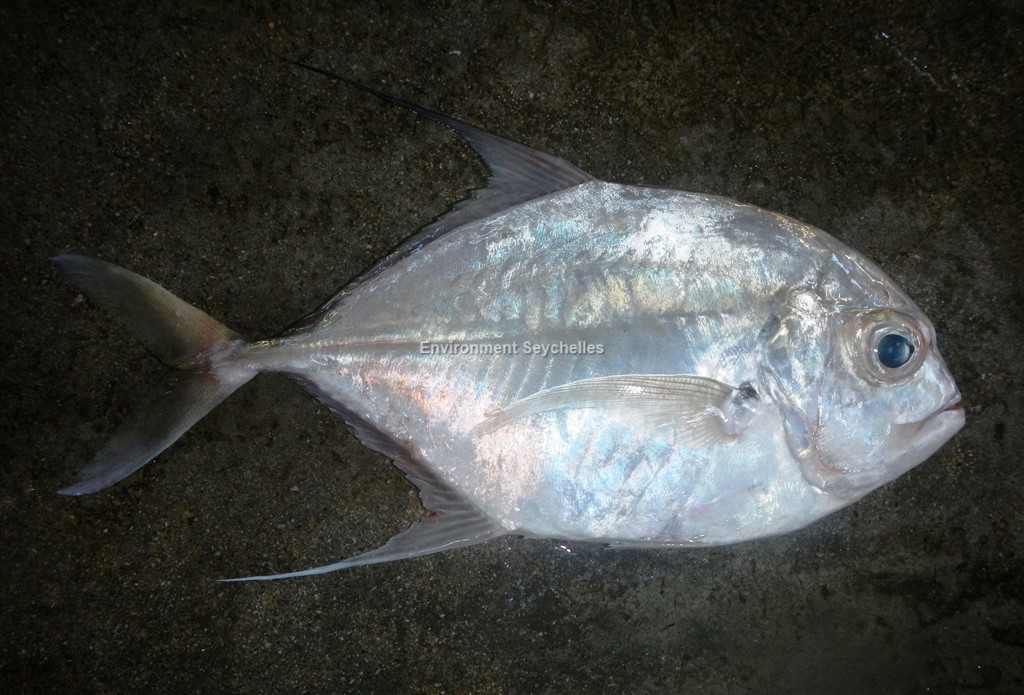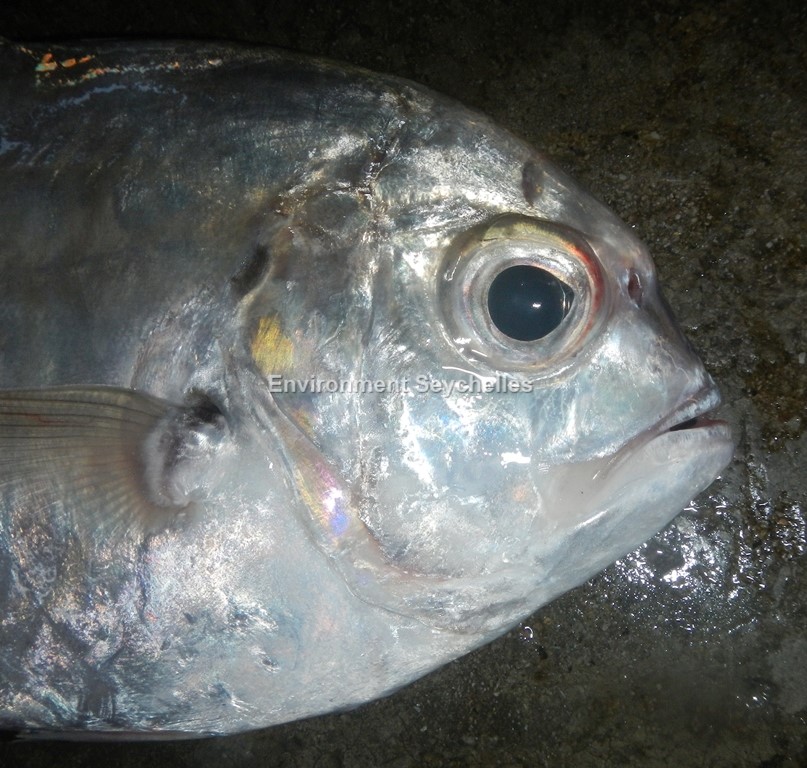Description:
Dorsal spines: 9; Dorsal rays: 20-22; Anal spines: 3; Anal rays: 16-18.
Body strongly compressed and deep with an extremely steep head profile that bears a noticeable bump just in front of the large eyes. Bands of villiform teeth on both jaws
widen anteriorly. Breast naked ventrally to behind origin of pelvic fins; laterally, naked area of breast extends diagonally to base of pectoral fins. Lateral line with
anterior, moderate regular arch. Lobe of second dorsal fin elongate and filamentous. Adult males have 3-8 filamentous rays in the middle of the dorsal and anal fins. Pectoral
fins are long and falcate. The caudal fin is deeply forked.
Colour: greenish-blue shading to silvery grey ventrally. A blackish blotch on the upper margin of opercle. Spinous dorsal fin, elongated dorsal-fin rays blackish.
Filamentous lobe of anal fin either blackish or pale brownish, elongated rays pale brownish. Caudal fin yellowish with dark edge.
Size:
Maturity: Lm unknown. Range unknown. Max Length: 32.0 cm TL.
Habitat and Ecology:
Adults inhabit coastal waters of the continental shelf to 40m depth. The spawning, fecundity, maturity and other life history traits for this species are poorly understood.
Fishery Status:
This species is not protected or subject to fishery regulations. It is caught in the hand line fishery where it is an occasional and scarce component of the catch.
Notes:
References:
Bray, D.J. (2018). Carangoides hedlandensis in Fishes of Australia, http://fishesofaustralia.net.au/home/species/4263 (18/05/19)
Fischer, W. & G. Bianchi (eds), (1984). FAO species identification sheets for fishery purposes. Western Indian Ocean; (Fishing Area 51). Prepared and printed with the
support of the Danish International Development Agency (DANIDA). Rome, Food nd Agricultural Organization of the United Nations, vols 1-6: pag. var.
Froese, R. & D. Pauly. Eds. (2019). FishBase. https://www.fishbase.se/summary/Carangoides-hedlandensis.html (18/05/19).
Smith-Vaniz, W.F. & Williams, I. (2016). Carangoides hedlandensis (errata version 2017). The IUCN Red List 2016: http://dx.doi.org/10.2305/IUCN.UK.2016-3.RLTS.T20429787A65927733.en. (18/05/19).
Van Der Elst, R. (2012). A Guide to the Common Sea Fishes of Southern Africa. Struik Nature, Cape Town, South Africa. ISBN: 978 1 86825 394 4
Citation:
Nevill, J.E.G. (2019). Carangoides hedlandensis, Bumpnose trevally. Seychelles Seatizens. www.seatizens.sc. https://seatizens.sc/species/carangoides-hedlandensis-whitley-1934/ (edited 22/06/22).




I cannot thank you enough for the article.Thanks Again. Cool.
Thanks again for the blog.
I really enjoy the article post.Thanks Again.
Enjoyed every bit of your article.Really thank you! Great.
Im grateful for the post.Much thanks again. Will read on…
Great article post.Really looking forward to read more. Want more.
I cannot thank you enough for the post.Really thank you!
Wow, great article.Really looking forward to read more. Keep writing.
Major thankies for the article post.Really looking forward to read more. Really Great.
Looking forward to reading more. Great blog.Thanks Again. Cool.
Thanks so much for the blog post.Really looking forward to read more. Much obliged.
I really enjoy the article.Really thank you! Will read on…
Very neat blog post.Really thank you! Much obliged.
Very neat blog.Much thanks again. Much obliged.
Hey, thanks for the article post.Really thank you! Will read on…
A big thank you for your blog article.Really thank you! Much obliged.
Thanks a lot for the blog.Thanks Again. Great.
I value the blog.Really looking forward to read more. Cool.
I value the article.Really thank you! Really Great.
This is one awesome article.Really thank you! Really Cool.
I really like and appreciate your blog. Want more.
Appreciate you sharing, great post.Much thanks again. Want more.
This is one awesome article. Really Cool.
Great post.Much thanks again. Keep writing.